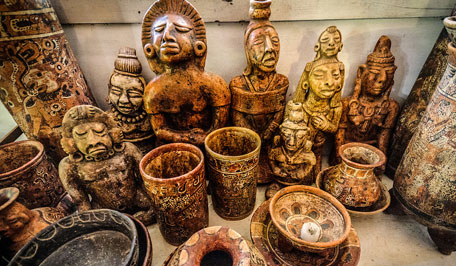Mayan artifacts on display before 'end of days'

 0 Comment(s)
0 Comment(s) Print
Print E-mail CNTV, November 26, 2012
E-mail CNTV, November 26, 2012
The latest showcase of Mayan artefacts opened in Mexico City on Friday just weeks before the ancient civilisation's calendar is due to end, prompting competing theories and speculation of the apocalypse and end of days.
 |
|
Mayan artifacts on display before "end of days" |
Crowds streamed into Mexico City's acclaimed Museum of Anthropology for the "Maya: Space and Time" exhibition that includes hundreds of priceless pieces retrieved from abandoned Maya cities in the country.
Following an extensive world tour that included countries such as South Korea and Colombia, the exhibition headed to the Mexican capital in time for December 21, 2012, the date in which the Mayan lunar calendar comes to the end of a 5,126-year cycle and resets for another era.
However, Maya expert and director of Mexico's National Institute of Anthropology and History, Alfonso De Maria Y Campos, said the end of the calendar marks a new era rather than an end for the mysterious civilisation.
Alfonso de Maria Y Campos, director of National Institute of Anthro. & History, said, "What is confusing people is that the long count that we are in now is the end of a Baktun period, a very long count. This long count is what is being celebrated on December 21st because this is the date that is found on different tablets such as the tortoise tablet which talks about the arrival of a man, a new man, who is going to take over a specified Mayan region. It is a very important historical moment."
With the descendants of the ancient Maya now one of the largest indigenous communities in Mexico, De Maria Y Campos added that the ancient civilisation was able to protect itself from the Spanish conquistadors by retreating to ancient Maya strongholds near modern-day Belize.
Campos said, "The Mayas did not die there, they retreated and the Spanish did not want to cross a certain region and they took refuge in Bacalar in the south of Quintana Roo state closer to Belize."
Among the popular artefacts on display is an ancient stone tablet of the Maya calendar.
Dominating the region for some 2,000 years before mysteriously abandoning their cities around 900 A.C.E., the Mayans built soaring temples and elaborate palaces from modern day Mexico, Honduras, Guatemala and El Salvador.






Go to Forum >>0 Comment(s)